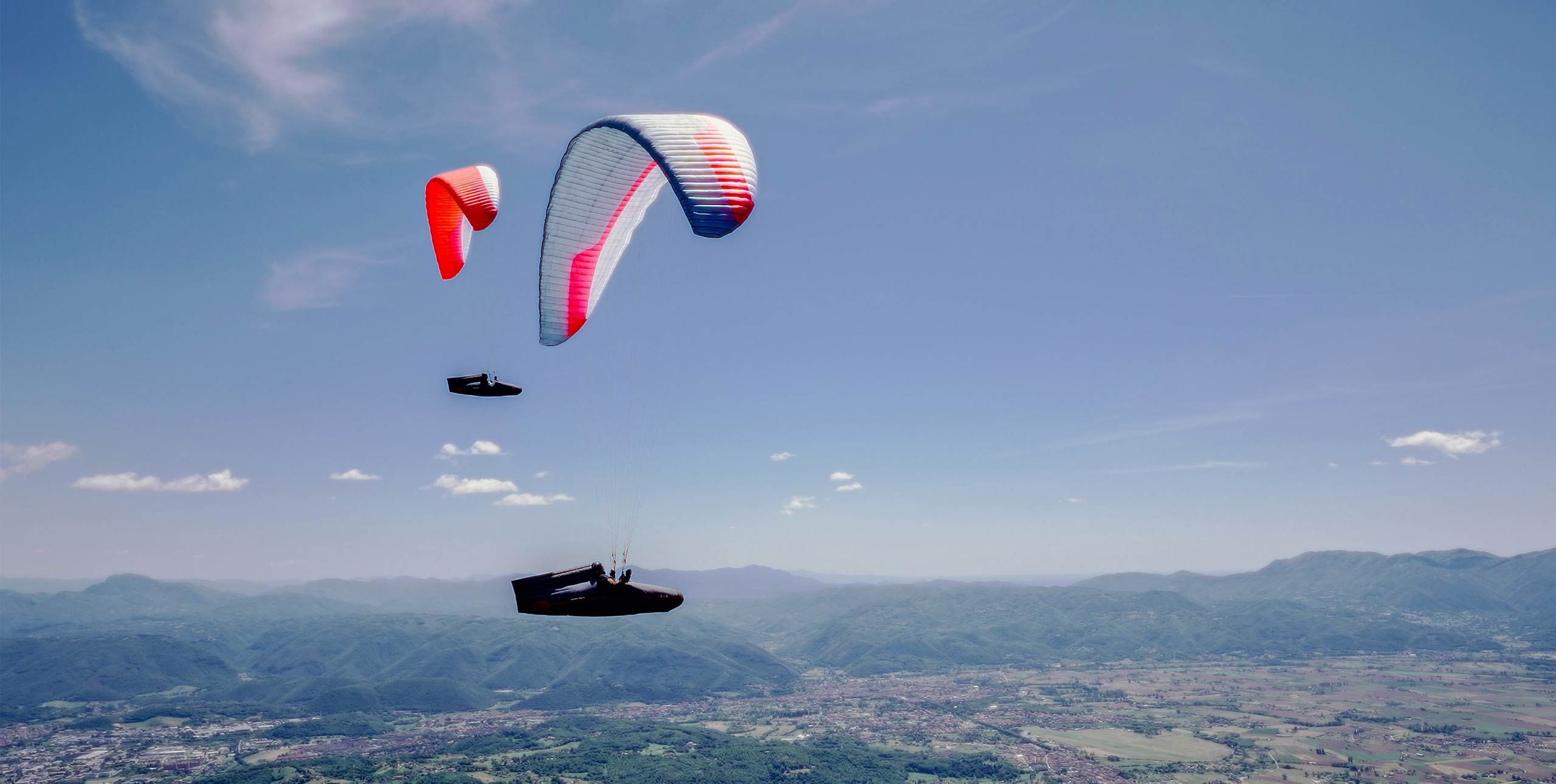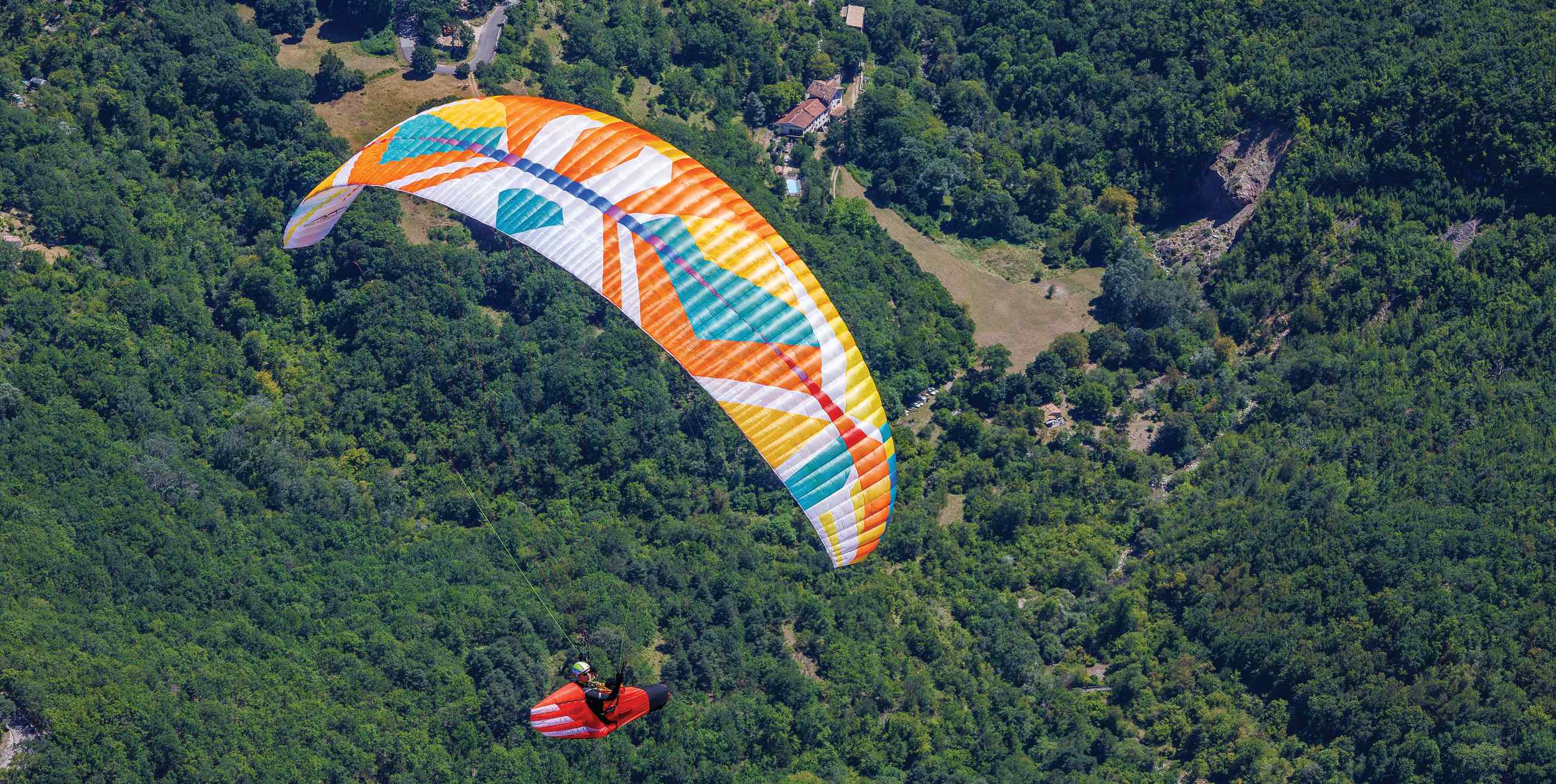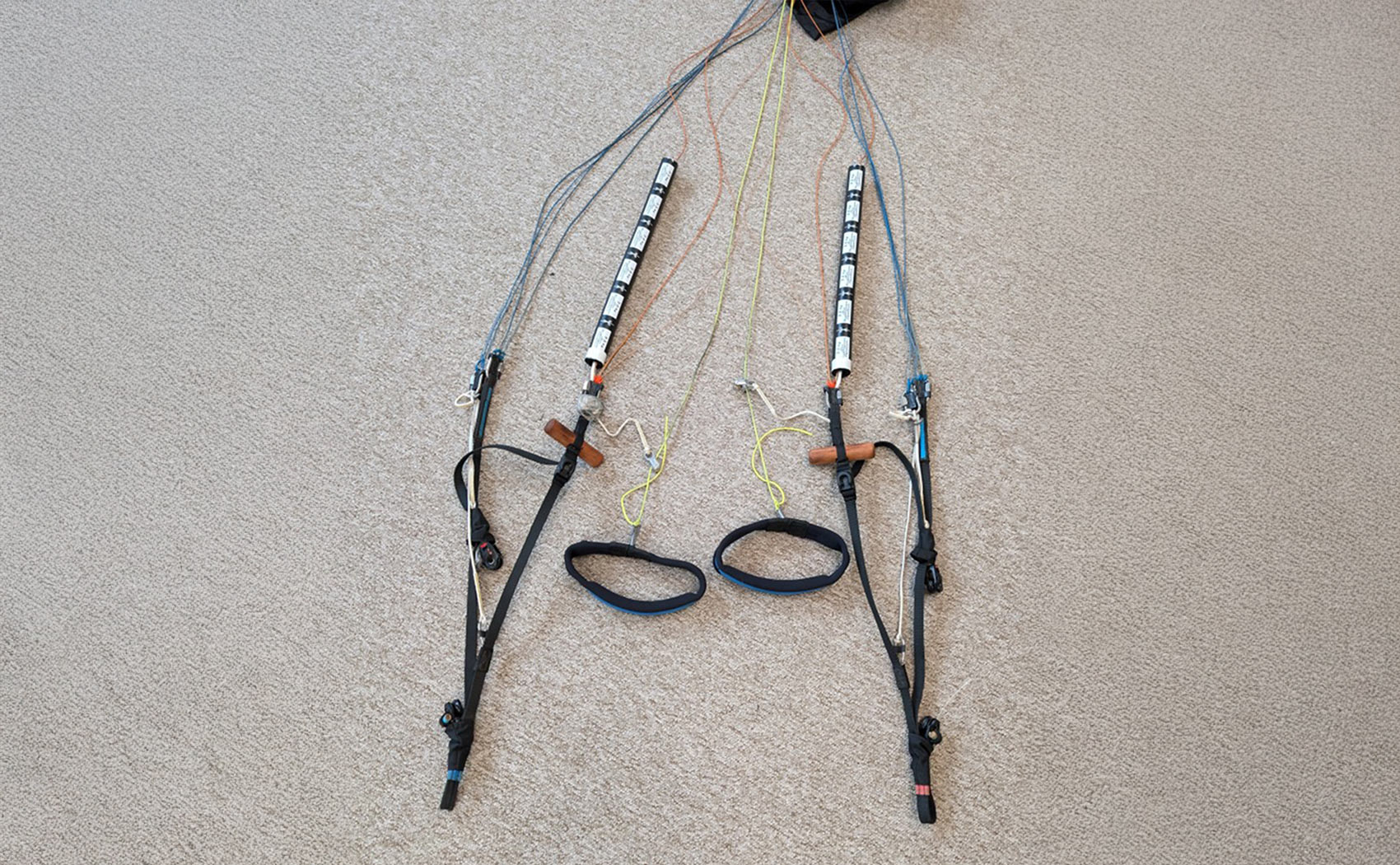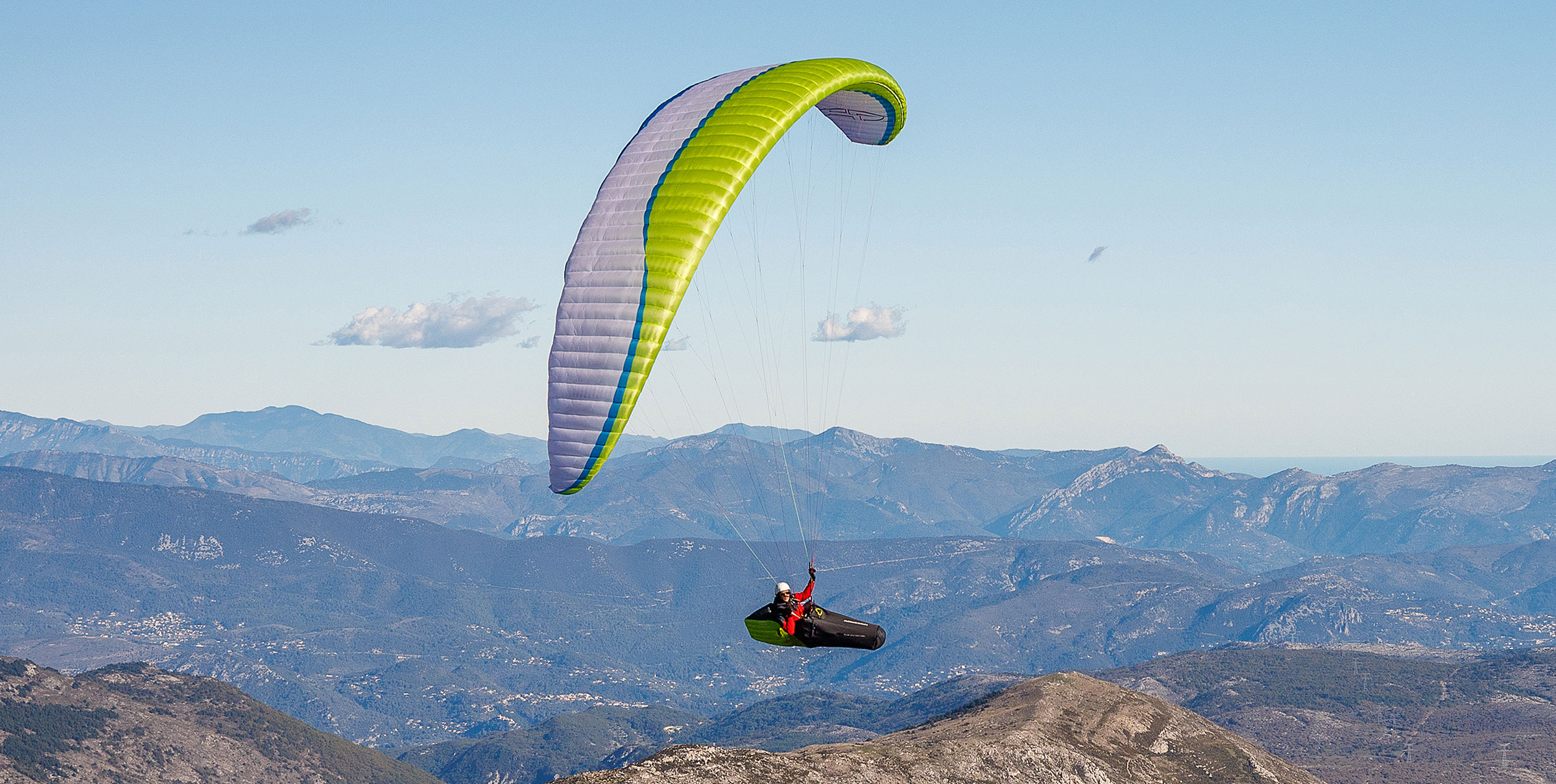
The first two-line EN C paraglider was hotly anticipated – but does it live up to the hype? Marcus King tries it out. Photos: Charlie and Marcus King
Roll back to Coupe Icare 2021 and the talk on the stands was the impending change in the rules to allow the use of folding lines when certifying EN-C wings. Why was this important? Simply put, it is very difficult to induce collapses on a two-liner. So, so-called ‘folding lines’ are used for certification – a special set of lines fitted just for the certification process that are used to induce consistent collapses.
Until last year using folding lines during certification gave the wing an automatic D rating, regardless of the wing’s behaviour. However, the rule change allowed them to be used when testing EN-C gliders. And that opened the door to EN-C two-liners. First to release a two-liner EN-C were AirDesign, who announced the Volt 4 at the virtual Stubai Cup in February of 2022.
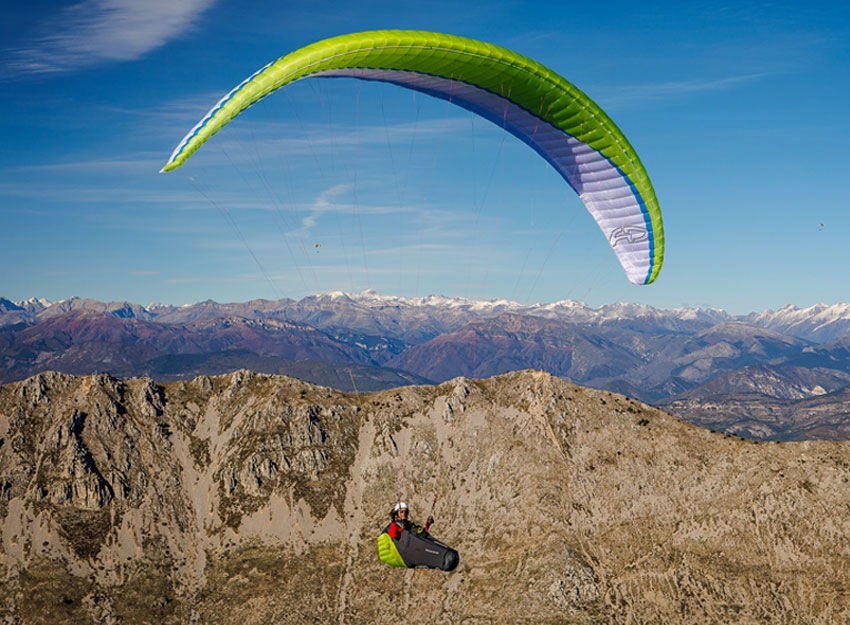
First look
A few short weeks later I found myself sliding about on the icy slopes of the Elfer launch at the real Stubai Cup in Austria with a final prototype of the medium size Volt 4. Sorting lines wasn’t exactly difficult with only two risers, even if it had the now optional Dyneema rope type risers.
With just a moment of hesitation I committed to heading down the snowy slope. The wing rose smoothly and quickly above me, taking my weight, and I was quickly in the air, all my fears of an embarrassing slide down the launch left far below me.
I headed to the steep wooded south face of the side valley where I found the first small climbs of the day. Flying with my Woody Valley GTO Light with inflatable protector it took a few seconds to get used to turning this 6.5 aspect ratio wing as it wants to stay flat and efficient. Soon though I was working the bubbles and the wing felt like it wanted to float up and into the climbs. I soon found myself climbing above the other wings and onto the main peak. Here I was on my own and I settled into the wing. Efficiency was the word that came to mind as it made the most of the weak morning lift without fuss.
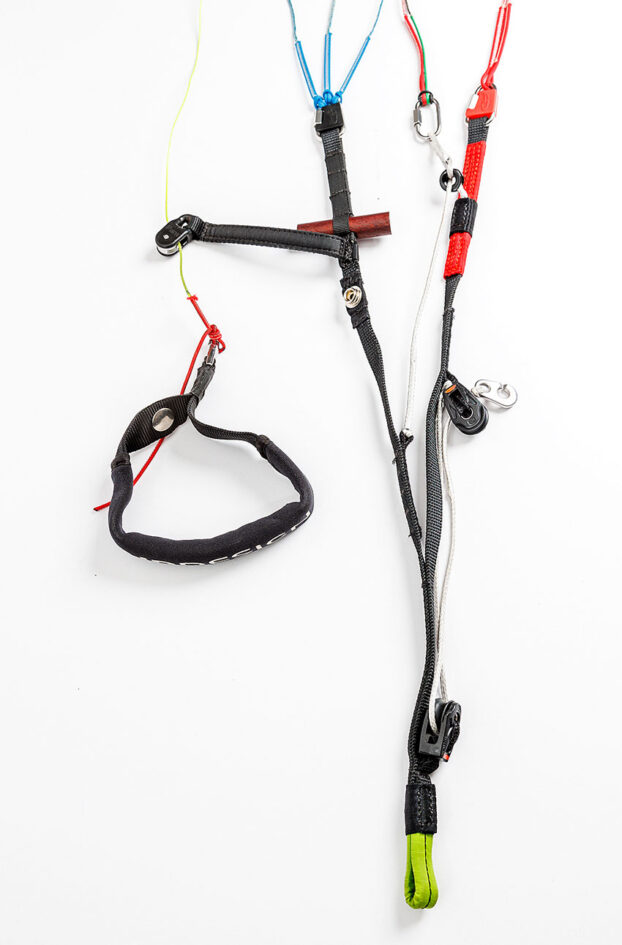
At the top I made the transition to the south face of the main valley where I could see other wings climbing. Having flown some of the hybrid 2/3-line C-class wings I settled on the rear riser controls naturally and could instantly feel what the wing was doing. At the other side conditions were stronger and I dug into a thermal that took me up into the snowy tops.
Despite the higher aspect ratio the wing felt taut with no massive movement. Once in the climb it circled easily without needing masses of input, despite the spring conditions. From there I glided up and down the valley to land with a big smile on my face. “When can we have a review wing?” was the question on my lips when I landed.
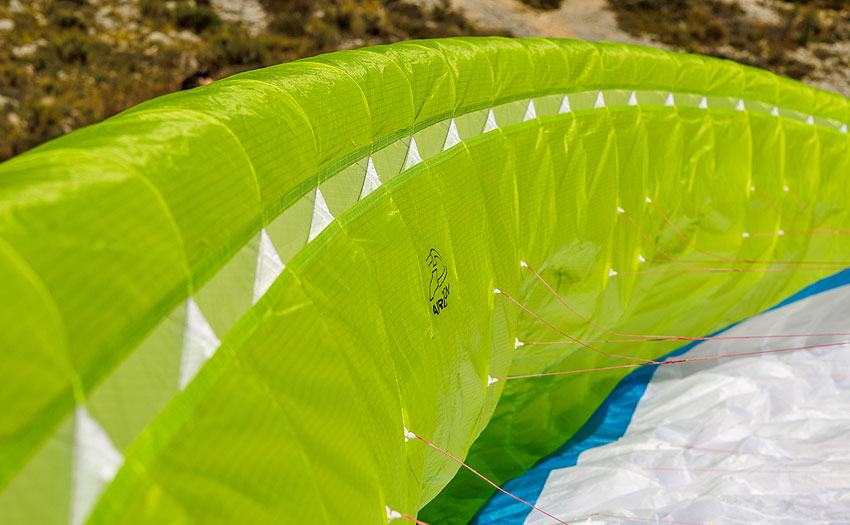
Design and build
I ended up waiting a few months as the DHV had a backlog of wings to certify, so despite the various sizes of Volt 4 being ready it took a while for the M I needed to be certified. But in late summer a box arrived from Austria with one of the first production wings inside.
I headed up the hill on a stable afternoon. Unrolling the wing the first thing you notice is the high aspect ratio. The Volt 4’s 6.5 is considerably higher than the Ozone Delta 4 at 6.05 and slightly more than the BGD Cure 2 and Gin Bonanza 2 at 6.4. This is a racy looking wing.
The sail is made from Porcher double-coated 27 Skytex that AirDesign have been using in their wings for a while. This, along with the lightweight construction, gives a wing that weighs only 3.91kg in the M size that goes to 103kg.
There is of course a sharknose up front and nitinol rods are used to support the chord. These are full length on some of the cells but it’s still possible to pack the wing in a compact package. On the wingtips you will find the vortex holes, designed to reduce induced drag, that we have seen on previous AirDesign wings.

Lines are all unsheathed but are coloured, so they are easy to identify at a glance when sorting the risers on launch. Some of the higher cascade lines are very fine and can catch if you are on a scrubby launch, but most of these should lay on the canopy. An extra line of tabs can be found in front of the A-attachments to allow the fitting of folding lines for SIV training.
The review glider was supplied with the now standard 12mm aramid webbing risers, although lighter Dyneema rope versions can be specified. With a two-riser setup these are simple to sort. They are well finished with wooden rear-riser handles. The brake handles are attached with poppers and are soft but nicely padded and feel comfortable in the air. The outer-A and stabilo sit on a floating maillon so they are easy to find.
Launching
Launching the wing it rose easily overhead with no sticking and accelerating, making it very easy to launch. I found this behaviour consistently in varying strengths of breeze.
Despite its relatively high aspect ratio the Volt 4 doesn’t bend around as it comes up and is easy to control. If you do have to apply a bit of brake to control it, I found there was no tendency to fall back as some wings can do. This is as easy to launch as most high-Bs.
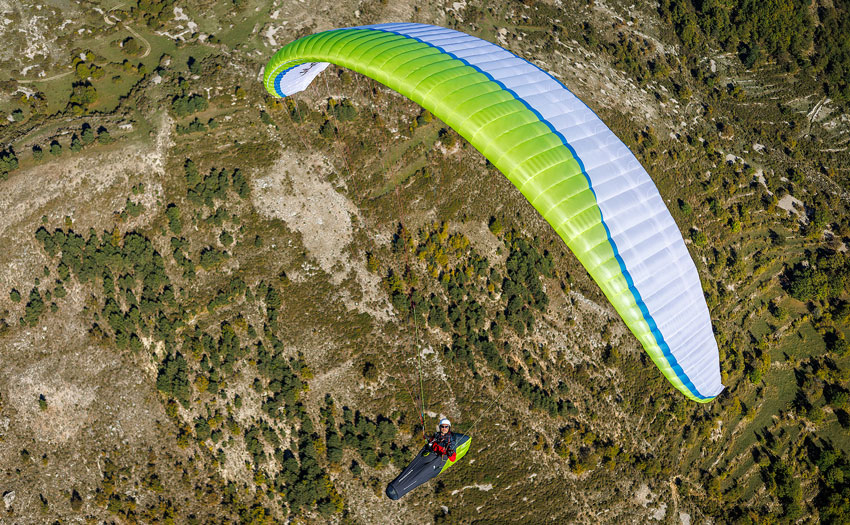
In the air
Once in the air I set about working the weak bubbles of lift coming through, keen to avoid the fate of the other pilots who had quickly found their way to the landing. The Volt 4 seems to prefer to turn flat and feels a little less nimble than some other Cs I have flown. This turn though is very efficient and the wing pulls in nicely to the bubbles of lift. Once going round it takes very little control to keep it centred. After a bit I found myself using the rear riser on the outside to control the wing in all but the most boisterous of thermals.
Moving along the slope I was able to use the rear risers to control the glider rather than the brakes, keeping things more efficient in the light lift. The rear controls have a nice direct feel that quickly becomes addictive, telling you what the wing is doing and giving a great feel of the air. Using this technique I was able to make long beats, gradually climbing the mountain until I reached the steeper ground above and stronger lift.
A few days later and the thermals were stronger. I found the right mix of inward pull of brake and weightshift to get the Volt 4 to bank up more and found it easy to whip round in tighter cores. Even in stronger lift the wing didn’t feel overly demanding for this class and I soon settled on it.

The brake pressure is on the heavier side but you don’t need to push it and the first section is reactive. I found going deep on the brakes didn’t stall the tips as easily as some other lower-aspect Cs I have flown. However, it feels more efficient to let the wing have plenty of speed in the turns and not choke it.
On glide
On glide the wing feels like it gets stiffer as you apply bar and the rear risers help you feel your way through the air finding the lifty lines. The wing needs very little control, even at three-quarters bar, which I used a lot. It pushes through the turbulence and into the lift without feeling like it is going to pitch hard.
I did a few tasks of a local comp where I spent time pushing bar and it always felt secure. Going pulley-to-pulley gives around 15km/h of extra speed. Glide comparisons are notoriously difficult but it feels efficient as you push on. It is a C though: so just because it is a two-liner don’t expect to keep up with Zeno 2s (EN D) when they hit the gas. What you get is top-level performance for the class and the chance to get to know the feel of a two-line wing.

Getting down
Being a two-liner I was surprised that the big ears worked well. There was none of the thrashing around that I have experienced with some hybrid designs. They come in easily and sit in a stable configuration. Once released I found they generally rolled out on their own.
In wingovers you can feel how well the wing retains its energy and it is easy to build them up. Spirals are easy to control and exit smoothly. I didn’t do any SIV on the wing and had only the smallest of wingtip flutters during my time with it.
Landing is easy as the glider has a good flare that makes it easy to come to a stop. It is also comfortable to fly fairly deep in the brakes when doing top-landings in the mountains. It’s ease of use along with its light weight will make it a good choice for vol-biv adventures. It’s a clever move from AirDesign as when other two-line EN-C wings come they are likely to be full weight so it will retain its spot in the market.
The verdict
After my first flight other pilots asked how it was and was it really a C-class wing? My answer then was yes, it certainly feels like it fits the class. Having spent 20 hours or so flying the Volt 4 in varying conditions I can comfortably say it is no more demanding to fly than many of the other C wings I have flown. It’s a true C.
Efficiency is a word that comes to mind every time I fly it. It just seems to help you make the most of the conditions. Then there’s that two-liner feel that gives you another level of information on the rear risers: just be warned, it is rather addictive.
With the Volt 4 AirDesign have created a perfect wing for those looking to move on from three-line wings to two-liners without a big jump in pilot demand. You can learn the new style of flying in comfort.
Manufacturer’s SPECIFICATIONS
AirDesign say: “Electrifying performance … a speed machine”
Use: XC and sports-class competition
Pilot level: Sports-class pilots
Sizes: XXS, XS, S, M, ML, L
Certified take-off weight (kg): 60-73, 70-82, 80-92, 88-103, 99-115, 110-128
Flat area (m2): 20.05, 21.50, 22.94, 24.68, 26.42, 28.16
Glider weight (kg): 3.37, 3.50, 3.74, 3.91, 4.11, 4.37
Cells: 57
Flat aspect ratio: 6.5
Certification: EN / LTF C
Published in issue 236 (December 2022 / January 2023)


